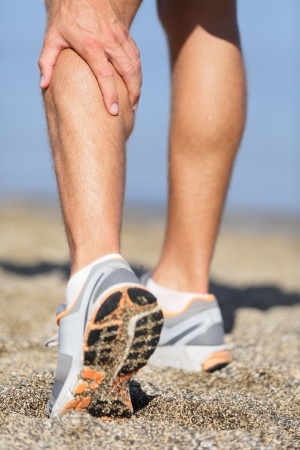Stephen wrote in a few questions on base cycling miles so I though I would share the responses.
But before we get to Stephen’s questions, let me explain what base cycling miles are. Most training plans you will find will follow some sort or “periodization.” This means that the training will be broken into phases, and each phase will have a specific training purpose. Here are the most typical phases and their purposes:
Prep/Base Phase – The goal of this phase is to work on general aerobic training and adaptation to the sport. In this phase you often spend most of your time going relatively easy to get your body used to the sport-specific movements required and improve your aerobic fitness in your sport. You can also use this phase to increase strength related to the motions you will be doing. From a training load perspective it is in general high volume, low intensity. Speed shouldn’t be ignored, but it will be a much smaller component of your training than in the next phase. Depending on your starting fitness level and event goals, this phase may last about 10-12 weeks.
Build Phase – This is the phase where your training becomes more race specific, as it is time to get your body ready to perform at race intensities. Your body is used to swimming, biking, running, or whatever your endurance sport is and you’ve strengthened up and improved your economy of motion in your sport (reduce “wasted movements” that take away energy from moving us forward) we start to add intensity. Your training volume may or may not increase, but the intensity definitely will! This might be a 6-8 week phase, depending on your racing goals.
Peak Phase – This is the final phase before a race. It’s called the “peak” phase because through this phase we hope to get your body to have achieved its peak fitness on race day (and therefore you have peak performance). This phase contains race specific intensities, but volume is reduced so you can start to recover. This phase is relatively short, just a few weeks.
Taper Phase – This phase may sometimes be considered included in the peak phase (semantics, really) but it is important no matter what you call it. In order to reach peak fitness on race day, your body needs time to repair itself from the months of training you have put in. This phase might be a couple days for a low-priority race or 3 weeks for a marathon or ironman-distance race. It’ll take some time, but if you pay attention to your training and recovery, you will learn how long it takes your body to recover for various races so you can go in to the race sharp. This phase includes a lot of rest, but the workouts will maintain race-intensity work. You don’t want your body to forget how to go fast on race day, do you?
Now that we have a basic understanding of the periodization of a training plan, let’s take a look at Stephen’s questions regarding the base phase.
1. How long or what total distance should base miles be?
I’m assuming you are talking about a single base mile ride, meaning a ride early in the season at an aerobic (easy-moderate intensity) . Here this depends on what your goal event distance is and your cycling experience/current fitness level. If your events are “short” say 30 miles then you probably don’t need to build much beyond that distance. You’ll most likely have an intense training plan, as shorter races are faster! But if you are training for a century ride (100 miles) then perhaps you build up to 50 or so in your base training phase. Again, the actual distance depends on a lot of factors, you just want to make sure you increase volume moderately slowly so you allow your body to adapt and you don’t get injured.
2. What gear ratio should I use for base miles, and what cadence RPM?
I’m an advocate of a lower ratio (small chain ring on a double, middle on a triple) and a higher rpm (~95) during the base phase to work on aerobic fitness, especially for the longer rides. But if muscular strength is a weakness, then shorter workouts can have big gear, low cadence intervals to help build strength and power. But I usually won’t specify specific gear ratios for training, as this can vary based on what bike you have and the conditions in which you are riding. So for those long endurance rides, use whatever ratio is needed to keep your cadence up but your effort level in the easy to moderate range.
Comments on this post? Please leave your comments below. If you have questions that you would like to see answered in the ‘Ask the Coach’ column you can post them in the comment section. You can also contact Coach Nicole on facebook, twitter or via email at nicole@neoendurancesports.com.
Ask the Coach – Base Cycling Miles
Coach Nicole is the founder and head coach for NEO Endurance Sports & Fitness, a Colorado-based endurance sport coaching company. She is a USAT Level 1 Certified Coach and also coaches triathlon for Team In Training. Learn more at https://neoendurancesports.com/.






